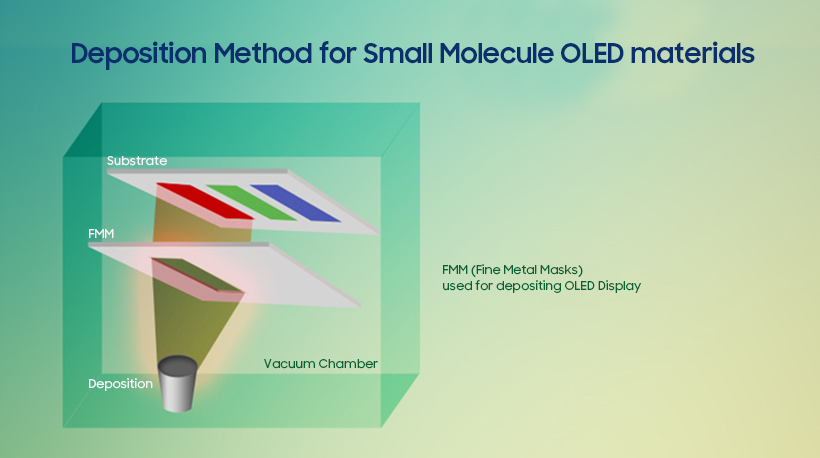
OLED displays use organic light-emitting materials and there are two main families: Those based on small molecules and those employing polymers. Small molecules typically weigh 500-1200g/mol, which are much simpler and lighter compared to polymers.

When researchers at Eastman Kodak built the first practical application of OLED in 1987, they used small molecules. Since then, small molecule OLEDs have gone through numerous evolution and are being used in most commercialized OLED displays.

Small molecule OLEDs are generally fabricated by evaporation process that heats up these materials to be utilized as display picture elements. Since every RGB pixel requires a different material, fine metal mask (FMM) is used to deposit small molecules in each display pixel area.
As small molecules are lighter than polymers, they can be used during the evaporation process, which enables intricate patterning as well as remarkable light emission performance.



